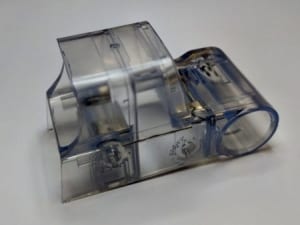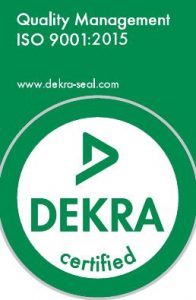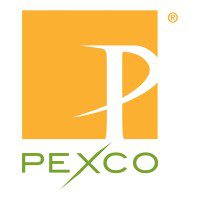
Insert Molding and Overmolding are very similar processes, but there are distinct differences between the two techniques. Insert molding is a slightly faster one step process because two plastic materials are molded at the same time, while overmolding is a two-step process where two separately molded parts are combined to enhance the parts performance.
Insert molding is a process which adds metal parts to injection molded parts during molding rather than after the parts have cured. This reduces the time for post-molding manufacturing/assembly operations. Inserts are placed into the mold cores or cast into the molds themselves. After the mold closes, plastic pellets are plasticized in the injector barrel and shot into the mold, the plastic material flowing around the captured inserts. Once the plastic hardens, the pieces are ejected from the mold, with the inserts now enclosed in the parts. Insert molding is a single-shot process
Insert molding is a common manufacturing method for producing connectors, electronic sockets, in addition to in making parts that are assembled with threaded fasteners. Insert molding is used to provide protective surfaces on many aerospace, defense, and medical/surgical devices.
Insert molding is also the term used to describe the overmolding technique of adding a layer of plastic material onto an existing metal or plastic part. Here, also, the metal or plastic part is placed into a single-shot injection mold and the over-mold material is injected around it.
Overmolding is an advanced plastic injection technique that creates parts from two or more materials. Typically referred to as “in-mold assembly”, overmolding can be facilitated by either using the insert molding technique, or a multi shot molding technique.
Plastic overmolding, sometimes called multi-shot molding, adds additional material such as thermoplastic elastomer (TPE). Multi-shot molding is usually performed by way of multi-barrel injection molding machines, the process adding additional material shortly after the base is formed to create strong bonds between materials. Plastic overmolding serves to eliminate steps in the manufacturing process while creating enhanced injection molded products.
Depending on the materials selected for the base and the over-mold, materials may be bonded chemically or mechanically. Inserts made of brass are common, but steel and stainless steel are also used. Many of the inserts are knurled on the outside or have special shapes that hold the insert in place. Among the many materials that are suited to overmolding, polycarbonate, ABS, Ultem, and nylon. Over-mold materials include PEEK (Polyetheretherketone), FEP & PFA Fluoropolymers, (Neoflon, Polyflon) and PEI (Polyetherimide) Ultem.
Multi-shot overmolding has many applications such as medical instruments where it can provide enhanced grip, sterilization, moisture protection, and so on. Automobile and Aerospace manufacturers use overmolding to reduce the need for additional assembly steps that would require using adhesives.
Insert Molding and Overmolding are very similar but have distinct differences. Insert molding is a one step process, while overmolding is a two-step process where two separately molded parts are combined to enhance the parts performance.






